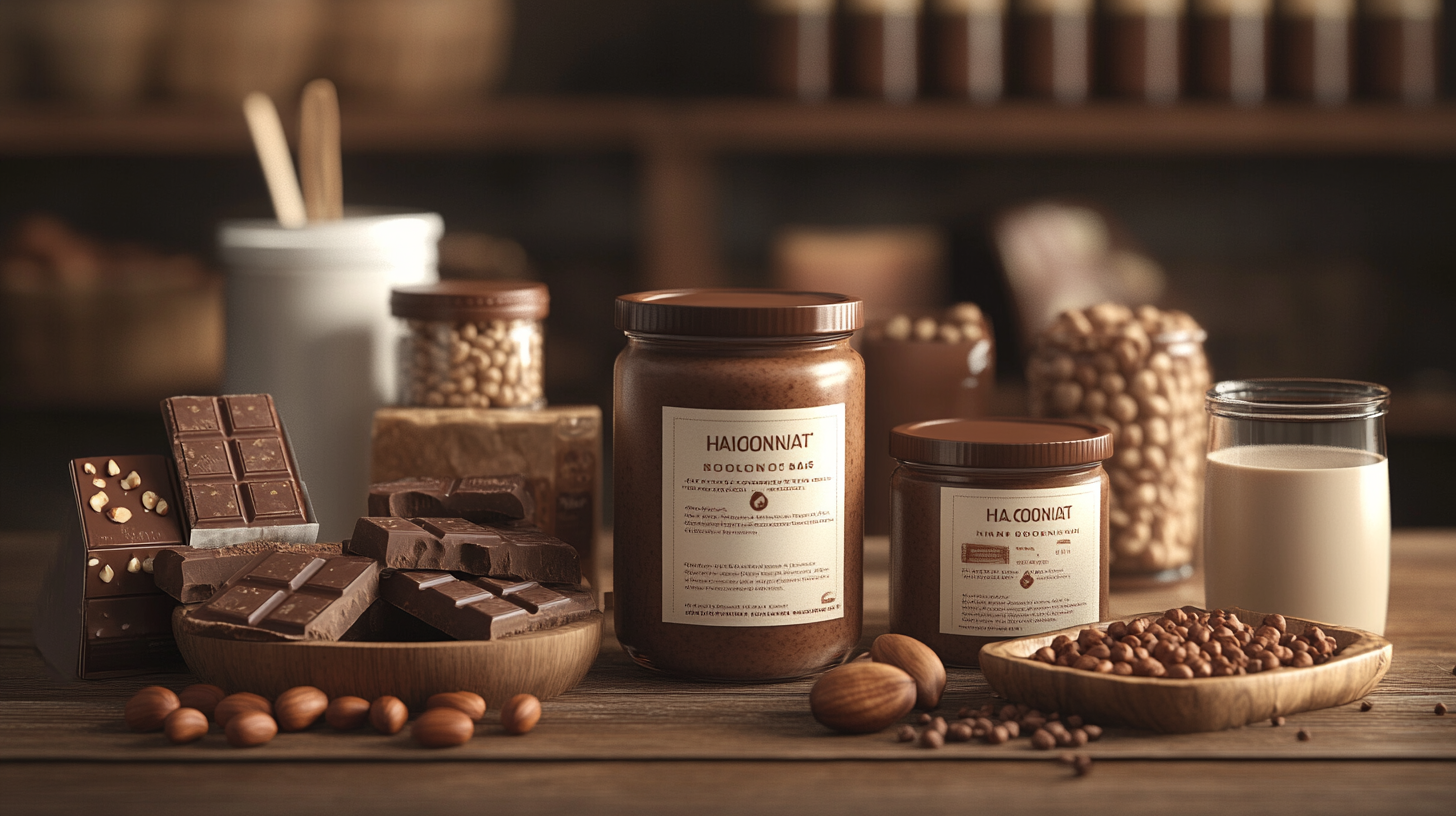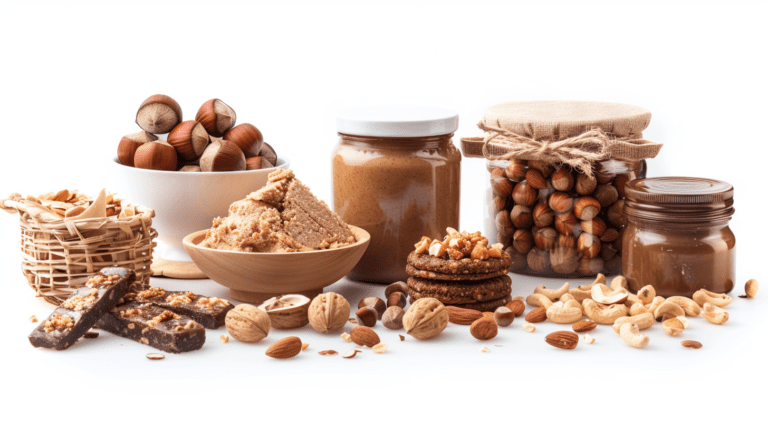Consumer Trends: The Rising Popularity of Hazelnut Flavors
The global food and beverage industry is witnessing a significant surge in the popularity of hazelnut flavors, driven by changing consumer preferences, health consciousness, and innovative product offerings. This comprehensive article explores the various factors contributing to the rising demand for hazelnut-flavored products, their impact on different market segments, and the future outlook for this flavorful trend.
The Hazelnut Renaissance
Hazelnuts, also known as filberts, have long been appreciated for their rich, nutty flavor and versatile culinary applications. However, recent years have seen a remarkable resurgence in their popularity, particularly in the form of hazelnut-flavored products.
– Health Benefits Driving Demand
One of the primary factors fueling the hazelnut trend is the growing awareness of their health benefits. Hazelnuts are rich in healthy fats, proteins, vitamins, and minerals, making them an attractive option for health-conscious consumers1. They are being incorporated into a variety of health-focused products, including snack bars, nut butters, and dairy alternatives, catering to the increasing demand for functional foods that promote heart health, weight management, and overall wellness.
– Versatility in Culinary Applications
The versatility of hazelnuts in both sweet and savory dishes has contributed significantly to their rising popularity. From simple sandwiches and salads to complex desserts and chocolates, hazelnuts offer a unique flavor profile that enhances a wide range of culinary creations3. This versatility has led to an explosion of hazelnut-flavored products across various food categories, appealing to consumers seeking new and exciting flavor experiences.
Market Segments Embracing Hazelnut Flavors
– Confectionery and Chocolate
The confectionery industry has been at the forefront of the hazelnut flavor trend. Chocolate manufacturers, in particular, have embraced hazelnuts as a key ingredient in their products. In 2020, the popular hazelnut spread Nutella had five of its products ranked in the top 10 grocery items in France, outperforming staples like butter and coffee3. This success has inspired other manufacturers to introduce hazelnut-based spreads and incorporate hazelnuts into their chocolate bars and candies.

– Beverages
The beverage industry has also capitalized on the hazelnut trend, with hazelnut-flavored coffees, teas, and milk alternatives gaining significant traction. Hazelnut milk, for instance, has emerged as a popular dairy alternative, appealing to consumers seeking plant-based options with a rich, nutty flavor4. The market for hazelnut milk is expected to grow substantially, driven by its nutritional benefits and versatility in various applications, including coffee beverages, smoothies, and baking recipes.
– Bakery and Desserts
Hazelnut flavors have found a natural home in the bakery and dessert sectors. From hazelnut-filled pastries to hazelnut-topped ice creams, the nutty flavor profile adds depth and complexity to sweet treats. Consumers are increasingly interested in seeing hazelnut incorporated into baked goods such as cookies, muffins, and bread, as well as in granolas and cereals3.
– Snacks and Spreads
The snack food industry has embraced hazelnuts as a premium ingredient in mixed nuts, trail mixes, and fruit and nut bars. Additionally, hazelnut spreads have gained immense popularity, with products like Nutella paving the way for a wide range of hazelnut-based spreads catering to different dietary preferences, including organic and vegan options.
Consumer Demographics and Preferences
– Millennial Appeal
Millennial consumers, in particular, have shown a strong affinity for hazelnut flavors. This demographic is known for its willingness to try new flavors and experiences, making them a key driver of the hazelnut trend3. The combination of nostalgia (associated with childhood memories of hazelnut spreads) and the desire for novel taste experiences has made hazelnut-flavored products especially appealing to this age group.
– Health-Conscious Consumers
The perception of hazelnuts as a healthy ingredient has attracted health-conscious consumers across all age groups. A 2017 survey revealed that 47% of people thought hazelnuts were “very healthy,” nearly double the percentage from 20063. This shift in perception has led to increased demand for hazelnut-based products among consumers seeking nutritious alternatives to traditional snacks and ingredients.
Global Market Trends and Regional Variations
– European Dominance
Europe remains the largest market for hazelnut products, with countries like Turkey, Italy, and Spain leading in both production and consumption1. The deep-rooted culinary traditions involving hazelnuts in these regions continue to drive demand and innovation in hazelnut-flavored products.
– North American Growth
The North American market has seen steady growth in hazelnut consumption, primarily driven by the popularity of hazelnut-based spreads and flavored coffees2. The United States, as the fourth-largest hazelnut producer globally, is experiencing increased domestic demand and expanding hazelnut cultivation to meet market needs.
– Emerging Markets in Asia-Pacific
The Asia-Pacific region is showing promising growth potential for hazelnut products. Countries like China, Japan, and South Korea are experiencing growing demand for hazelnuts, fueled by increasing health awareness and Western dietary influences1. The rise in disposable income and changing dietary habits in developing countries like India and China are expected to further boost the hazelnut market in this region.
Innovation and Product Development
– Flavor Combinations
Manufacturers are exploring innovative flavor combinations to cater to evolving consumer preferences. Popular pairings include chocolate, caramel, coffee, vanilla, sea salt, and coconut3. These combinations are being incorporated into a wide range of products, from confectionery to beverages, offering consumers new and exciting taste experiences.
– Organic and Sustainable Options
The growing demand for organic and sustainably produced foods has extended to the hazelnut market. Consumers are increasingly seeking organic hazelnuts and hazelnut products, driving producers to adopt more sustainable farming practices and transparent supply chains1.
– Functional Foods and Beverages
The incorporation of hazelnuts into functional foods and beverages is a growing trend. Manufacturers are developing products that not only offer the appealing flavor of hazelnuts but also provide specific health benefits, such as improved heart health or enhanced cognitive function.
Challenges and Opportunities
– Supply Chain and Production Challenges
The hazelnut industry faces challenges related to climate change, pest management, and supply chain disruptions. Adapting to changing climate conditions and ensuring a stable supply of hazelnuts are crucial for meeting the growing global demand1.
– Market Expansion Opportunities
The rising popularity of hazelnut flavors presents significant opportunities for market expansion. Emerging markets in Asia, the Middle East, and Latin America offer potential for growth, with increasing consumer awareness and changing dietary habits driving demand for hazelnut products1.
– Product Diversification
There is ample room for product diversification within the hazelnut flavor trend. From innovative snack options to new beverage formulations, manufacturers have the opportunity to create unique products that cater to specific consumer preferences and dietary needs.
Future Outlook
The future of hazelnut flavors in the global food and beverage industry looks promising. With projected growth rates of over 10% in hazelnut consumption, the market is poised for continued expansion2. As consumers increasingly seek out healthier, more flavorful alternatives to traditional products, hazelnut-based offerings are likely to maintain their popularity and evolve to meet changing preferences.
In conclusion, the rising popularity of hazelnut flavors represents a significant trend in the food and beverage industry, driven by a combination of health consciousness, flavor preferences, and innovative product development. As manufacturers continue to explore new applications and markets for hazelnut-flavored products, consumers can expect an ever-expanding array of options that cater to their taste for this versatile and beloved nut.
Sources:
[1] https://hazelnuthub.com/current-trends-in-the-global-hazelnut-market/
[2] https://hazelnuts.au/articles/viewArticle/the-global-market-for-hazelnuts-trends-and-forecasts
[3] https://www.freyabadi.com/en/blog/the-rise-of-hazelnut-products
[4] https://www.gminsights.com/industry-analysis/hazelnut-milk-market
[5] https://www.technavio.com/report/hazelnut-market-industry-analysis
[6] https://www.fooddive.com/news/hazelnuts-are-primed-for-an-upswing-in-popularity/515303/
[7] https://www.cognitivemarketresearch.com/hazelnut-market-report






